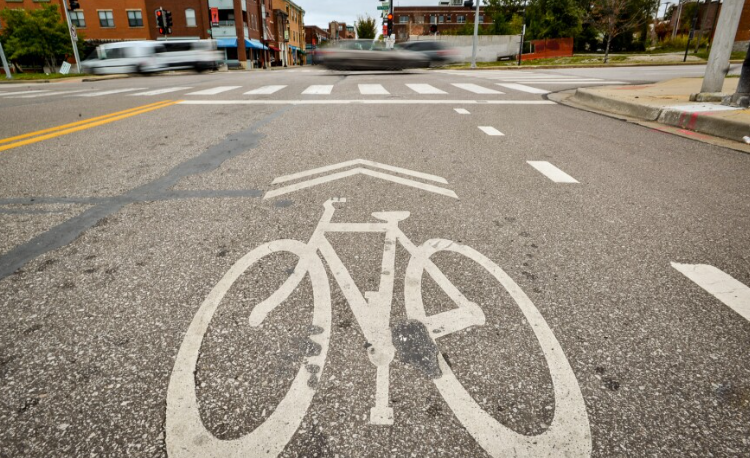Bike Lanes Advantages and Disadvantages

In the heart of bustling cities and even in quieter suburban landscapes, there’s a change underfoot—or perhaps more aptly, under the wheel. Bike lanes, those dedicated pathways for two-wheeled commuters, are sprouting up everywhere. Yet, they aren’t without their fair share of critics and proponents. Let’s ride through both sides of the debate and analyze bike lanes advantages and disadvantages.
Advantages of Bike Lanes
- Safety for Cyclists: One of the paramount benefits of bike lanes is the increased safety they provide. Accidents involving cyclists and vehicles can be particularly gruesome. By providing a clear, marked space exclusively for bicycles, these accidents can become rarer. It takes the guesswork out of navigating crowded roads for both drivers and cyclists.
- Environmental Benefits: Mother Earth surely appreciates more bike lanes! With an emphasis on sustainable transportation, cities can significantly reduce their carbon footprint. Every cyclist on the lane means one less car emitting greenhouse gases, leading to fresher air for all.
- Health and Fitness: Trading a car ride for a bike ride even just a few times a week can do wonders for one’s health. Cycling is a heart-pumping activity that sheds calories, boosts cardio health, and releases those much-loved endorphins. Cities with bike lanes often witness a more active and healthier populace.
- Traffic and Congestion: Think of bike lanes as a long-term solution to traffic woes. By offering an alternative to cars, there’s the potential for fewer vehicles clogging up the main arteries of a city. Plus, with the integration of bikes, buses, and pedestrians, a more harmonious urban rhythm emerges.
- Economic Benefits: It’s not just about health and environment; it’s also about the green in the wallet. Cyclists are often more prone to stop and patronize local businesses. Moreover, the creation and upkeep of these lanes can spur job opportunities.
- Community and Culture: There’s a unique camaraderie among cyclists—a sense of shared purpose and community. Bike lanes foster this spirit. Moreover, they become symbols of a city’s commitment to sustainability and health.
Disadvantages of Bike Lanes
- Traffic Flow Concerns: In the initial phases, especially, new bike lanes can seem to cause more traffic chaos than they alleviate. Reducing space for motor vehicles might lead to bottlenecks.
- Parking Issues: Bike lanes sometimes come at the expense of on-street parking, a valuable commodity in many urban areas. This can stir frustration among residents and store owners.
- Economic Costs: Funding the creation and maintenance of bike lanes isn’t trivial. Some argue that these funds might be better diverted to other pressing infrastructure needs.
- Safety Concerns: Ironically, while designed for safety, certain bike lane designs can pose risks, like placing cyclists in the “door zone” of parked cars.
- Aesthetic and Neighborhood Character: A sudden change in road structure might not sit well with everyone, especially those who value the traditional appearance of their neighborhoods.
- Land Use Disputes: Larger bike lane projects might ruffle feathers if they encroach on private properties or beloved public spaces.
- Enforcement and Usage Concerns: The effectiveness of bike lanes hinges on proper usage and enforcement. Will cyclists adhere to their lanes? Will drivers respect this new road demarcation?
Bike Lanes Advantages and Disadvantages: Conclusion
Bike lanes, like any urban planning decision, come with their bouquet of pros and cons. The key is striking a balance—ensuring safety, sustainability, and harmony, all while keeping an ear to the ground to address genuine concerns. It’s a challenging ride, but with the right approach, cities can pedal towards a brighter, greener future.
Additional Resources and Further Reading
For those interested in diving deeper, check out The Urban Cyclist’s Handbook for insights into urban cycling’s transformative power.
Explore more about bikes and accessories reviews at our homepage. Safe pedaling!
John
FAQ’s
Why bike lanes are important on college campuses?
Bike lanes are especially important on college campuses for several reasons:
- Safety: College campuses often have a high density of pedestrians, cyclists, and vehicles in close proximity. Bike lanes offer a designated space for cyclists, reducing potential conflicts with pedestrians and vehicular traffic, and thereby increasing safety for all.
- Promotion of Sustainable Transportation: College campuses are often at the forefront of promoting sustainability. Encouraging cycling through dedicated bike lanes is an eco-friendly transportation option that reduces greenhouse gas emissions and the campus’ carbon footprint.
- Cost-Efficient for Students: Many students operate on tight budgets. Cycling is a cost-effective mode of transportation, eliminating the expenses of fuel, parking, and car maintenance. Bike lanes make it more feasible and appealing for students to choose biking over driving.
- Reduction of Traffic Congestion: On many campuses, particularly during the start and end of classes, there’s a noticeable congestion of vehicular traffic. By encouraging cycling, campuses can alleviate some of this congestion, making it easier for everyone to get around.
- Health and Well-being: Regular cycling promotes physical fitness, which can be beneficial for students dealing with the stresses of academic life. Bike lanes provide a safer environment for those looking to incorporate regular biking into their routine.
- Space Efficient: Bikes require less space than cars. Bike lanes and bike racks can accommodate more students than parking lots or garages, making it a more space-efficient transportation solution for densely populated campuses.
- Facilitates Greater Campus Engagement: When students bike, they’re more likely to engage with the campus environment and participate in spontaneous activities, enhancing the overall college experience.
- Supports Larger City or Town Infrastructure: Many college campuses are integrated into larger cities or towns. By having bike lanes on campus, the college can connect seamlessly with larger city biking infrastructure, facilitating easier commutes for both students and faculty.
- Setting an Example: College campuses serve as role models for broader communities. By prioritizing bike lanes and sustainable transportation, they can inspire towns, cities, and other institutions to do the same.
- Cultivating a Bike Culture: A campus with well-designed bike lanes can foster a vibrant cycling culture, leading to organized rides, bike repair workshops, and other community-building events.
In essence, bike lanes on college campuses not only address practical issues like safety and congestion but also foster a culture of sustainability, health, and community engagement.






Keep up the fantastic work and continue to inspire us all!
I couldn’t stop scrolling and reading, your content is truly one-of-a-kind. Thank you for all the time and effort you put into creating such amazing content.